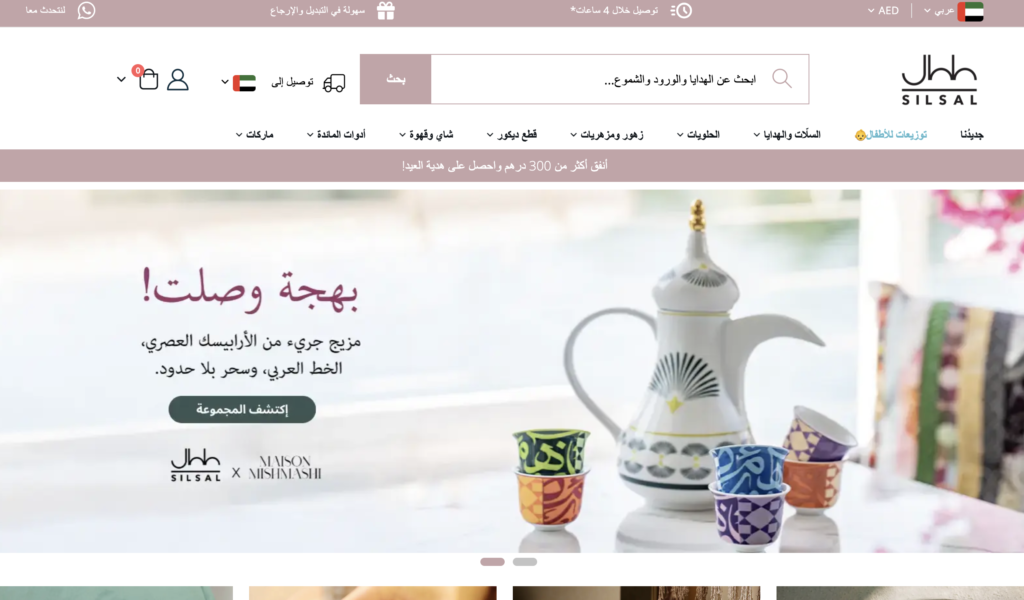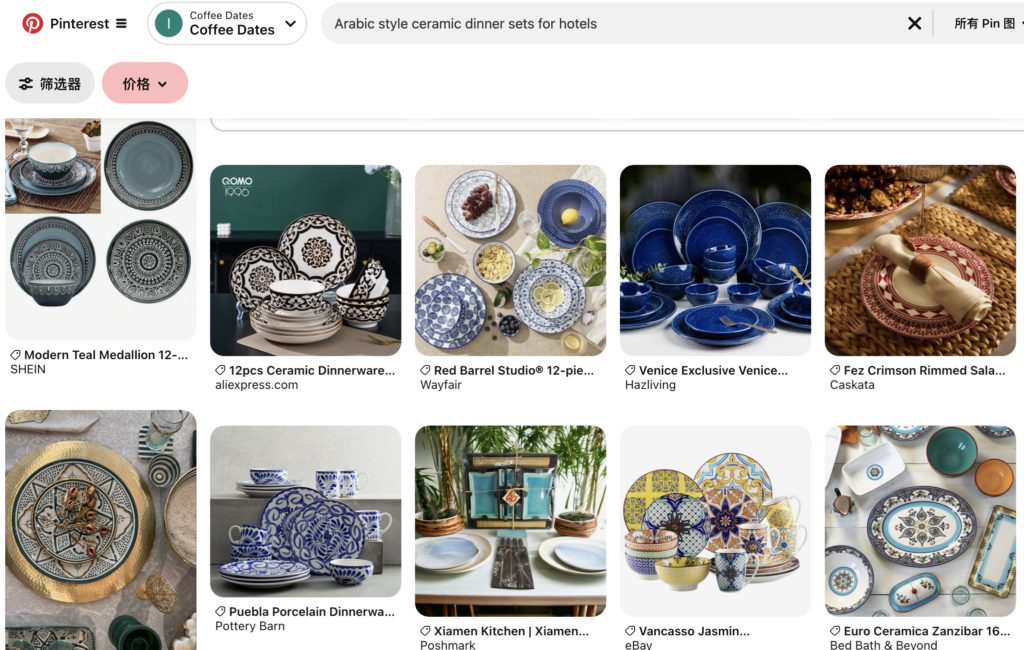In the heart of the Middle East, where tradition and luxury intertwine seamlessly, the hospitality industry is experiencing a subtle yet powerful transformation—driven not by technology or architecture, but by something far more intimate: ceramic tableware.
From boutique hotels in Amman to high-end resorts in Dubai, ceramic dinnerware is no longer just a background detail—it’s becoming the soul of the dining experience. Let’s dive into how ceramic tableware is reshaping the hospitality landscape in the Middle East and why global buyers, gift merchants, and even cross-border e-commerce sellers should pay close attention to this rising trend.
Why Ceramic Tableware Resonates with Middle Eastern Hospitality Values
Middle Eastern hospitality is built on generosity, aesthetics, and shared meals. The act of serving food isn’t just a routine—it’s a gesture of honor. Therefore, the vessel that holds the food must reflect the same warmth and pride. Here’s where ceramic tableware shines:
- Authentic Aesthetics: Hand-glazed ceramics with earthy tones resonate with traditional Arabian decor.
- Durability in Commercial Use: Modern ceramic formulations offer chip resistance—perfect for busy hotel and restaurant use.
- Eco-conscious Appeal: In a region slowly embracing sustainable luxury, ceramic dishes are a natural fit.
More importantly, ceramics allow for emotional storytelling through design—be it intricate Islamic patterns, minimalist modern glazes, or local artisanal motifs.
Popular Ceramic Tableware Styles Gaining Traction in the Middle East
Not all ceramic styles are treated equally. Below is a comparative table to help distinguish the most in-demand designs in the Middle Eastern market:
| Style Type | Description | Popular Settings | Appeal in Hospitality Sector |
|---|---|---|---|
| Hand-glazed Earth Tones | Matte finishes with natural hues like sand, terracotta, olive, and indigo | Boutique Hotels, Desert Resorts | Harmonizes with regional interiors |
| Arabic Motif Designs | Intricate calligraphy, geometric shapes, gold detailing | High-end Restaurants, VIP Events | Evokes cultural pride and luxury |
| Minimalist White Ceramics | Pure white or soft ivory finishes with subtle textures | Modern Cafés, Fusion Cuisine Spots | Clean aesthetics, perfect food contrast |
| Reactive Glaze Tableware | Unique, unpredictable glazing patterns with metallic sheens | Rooftop Bars, Fusion Diners | One-of-a-kind look enhances Instagram appeal |
| Traditional Stoneware | Thicker, rustic feel with vintage charm | Heritage Hotels, Local Inns | Nostalgic and cozy, aligns with tradition |
How Local Middle Eastern Brands Are Elevating Ceramic Tableware Design
The demand for ceramic tableware has given rise to local Middle Eastern brands that are reinventing traditional dining ware for modern hospitality. Here are five of the most notable names:
- Silsal Design House (UAE)
Known for combining Arabic calligraphy with contemporary ceramic aesthetics, Silsal’s collections are popular among luxury hotels and high-end gift retailers.

- Badiya Home (Saudi Arabia)
Badiya’s hand-crafted ceramics blend Saudi heritage with a Scandinavian twist, making them a hit in boutique resorts and concept restaurants. - Forsa Tableware (Jordan)
Their custom reactive-glazed ceramic plates and bowls are often used in Amman’s fine dining venues and artistic cafes. - Zayrah Table (Lebanon)
Focusing on Levantine stoneware traditions, Zayrah’s pieces are both functional and poetic—especially loved by family-run guesthouses and boutique inns. - Claymotive (Kuwait)
A younger brand with bold patterns and playful glazes, Claymotive’s ceramics are designed for Instagram-worthy presentations, often seen in new-age coffee shops.
These brands reflect a broader shift—ceramics are no longer just functional; they’re part of the brand identity for hospitality businesses.
The Role of Ceramic Tableware in Upscaling Guest Experience
In a region where culinary tourism is booming, first impressions at the table matter more than ever. Ceramic tableware plays a critical role in:
- Visual storytelling: Whether it’s a mezze platter or a cup of gahwa, the right plate elevates the visual impact.
- Tactile satisfaction: Ceramic pieces feel substantial and grounded in the hand, unlike lightweight plastic or metal alternatives.
- Noise reduction: Ceramics offer a quieter dining experience compared to clinking stainless steel or glass.
- Luxury perception: Matte-glazed bowls or uniquely shaped plates subtly suggest bespoke curation and care.
Ceramic Tableware as the New Favorite in Hotel Procurement Channels
Hospitality buyers in the Middle East are increasingly looking for long-tail ceramic tableware keywords like:

- “Arabic style ceramic dinner sets for hotels”
- “Custom hotel-grade ceramic plates UAE”
- “Wholesale reactive glaze bowls for restaurants”
- “Modern minimalist ceramic mugs for cafes”
- “Durable stoneware dinnerware for hospitality use”
These niche-specific keywords show what professionals in the procurement industry are actively searching for. Ceramic products that meet food-grade safety, dishwasher resistance, and custom branding options are especially in demand for B2B sourcing.
FAQs – People Also Ask
Q1: What is the most popular ceramic tableware design in Middle Eastern hotels?
A: Hand-glazed earth tones and Arabic motif designs top the list. These styles align closely with the region’s cultural aesthetics and hospitality values.
Q2: Are ceramic plates suitable for commercial restaurant use?
A: Yes. Most modern ceramic tableware is kiln-fired at high temperatures, making it durable, dishwasher safe, and resistant to chipping—perfect for high-traffic environments.
Q3: How do I find reliable ceramic tableware suppliers for hospitality businesses?
A: Look for factories that offer OEM and ODM services, ideally with experience in hotel-grade production and global compliance standards.
Q4: What are the benefits of using ceramic over melamine or stainless steel?
A: Ceramics offer better visual appeal, more design versatility, are more sustainable, and provide a premium tactile experience compared to plastic or metal alternatives.
Q5: Can ceramic tableware be customized for branding in hotels?
A: Absolutely. Many manufacturers offer custom glaze colors, logo printing, embossed designs, and even bespoke shapes for exclusive hotel branding.
Final Thoughts
From Beirut to Riyadh, the Middle Eastern hospitality industry is no longer just about opulence—it’s about creating meaningful, multisensory experiences. And ceramic tableware is at the center of this evolution, marrying form and function with cultural depth.
For hospitality buyers, gift merchants, and global e-commerce sellers looking to source custom ceramic tableware that reflects Middle Eastern elegance, finding the right manufacturer is key.
EKA is a ceramic tableware manufacturer based in China, specializing in OEM and ODM services for global home and kitchen brands. With a strong track record of serving hospitality and gifting clients, EKA brings together quality craftsmanship and customized design to help your brand stand out in a competitive market.

